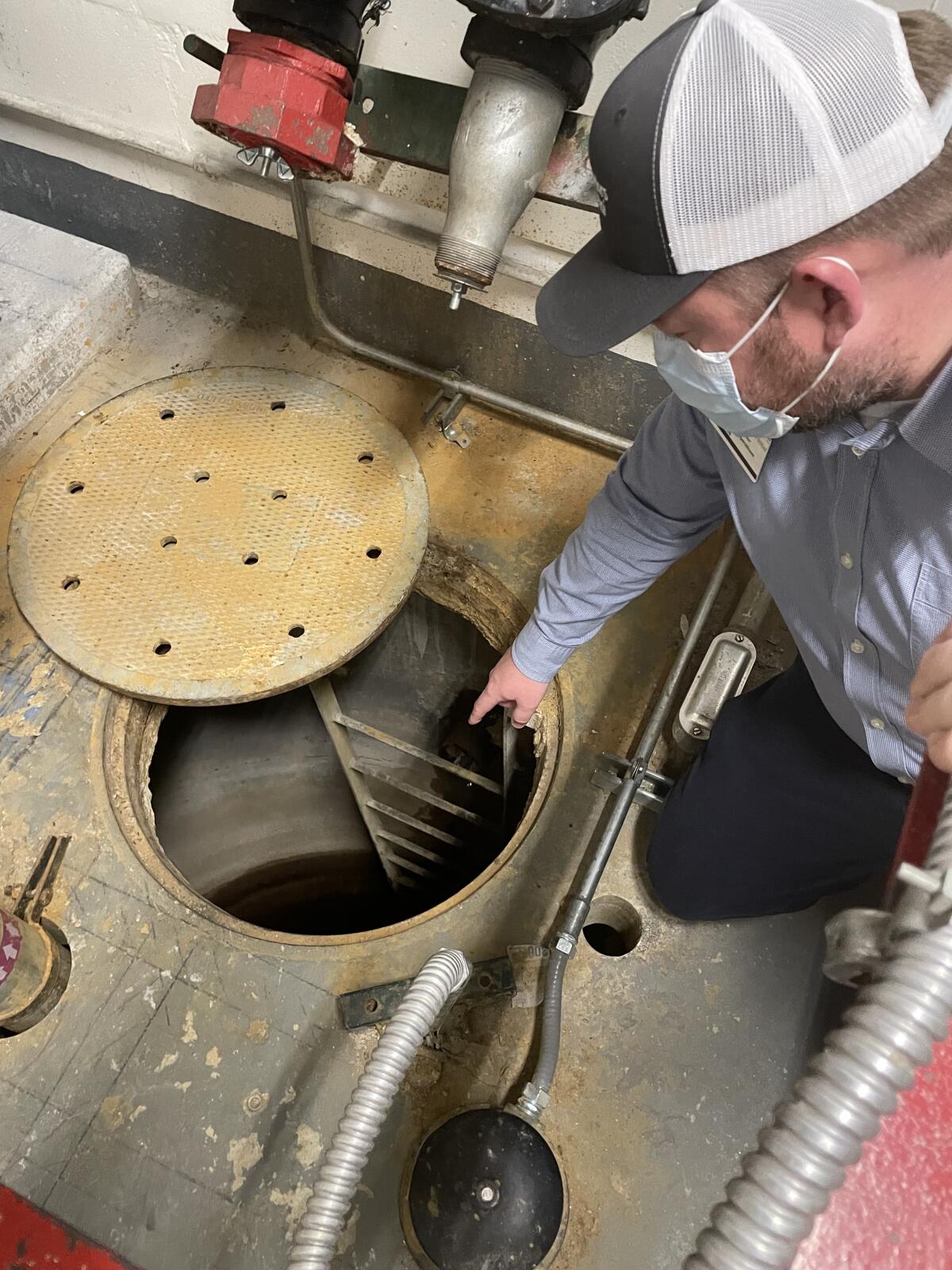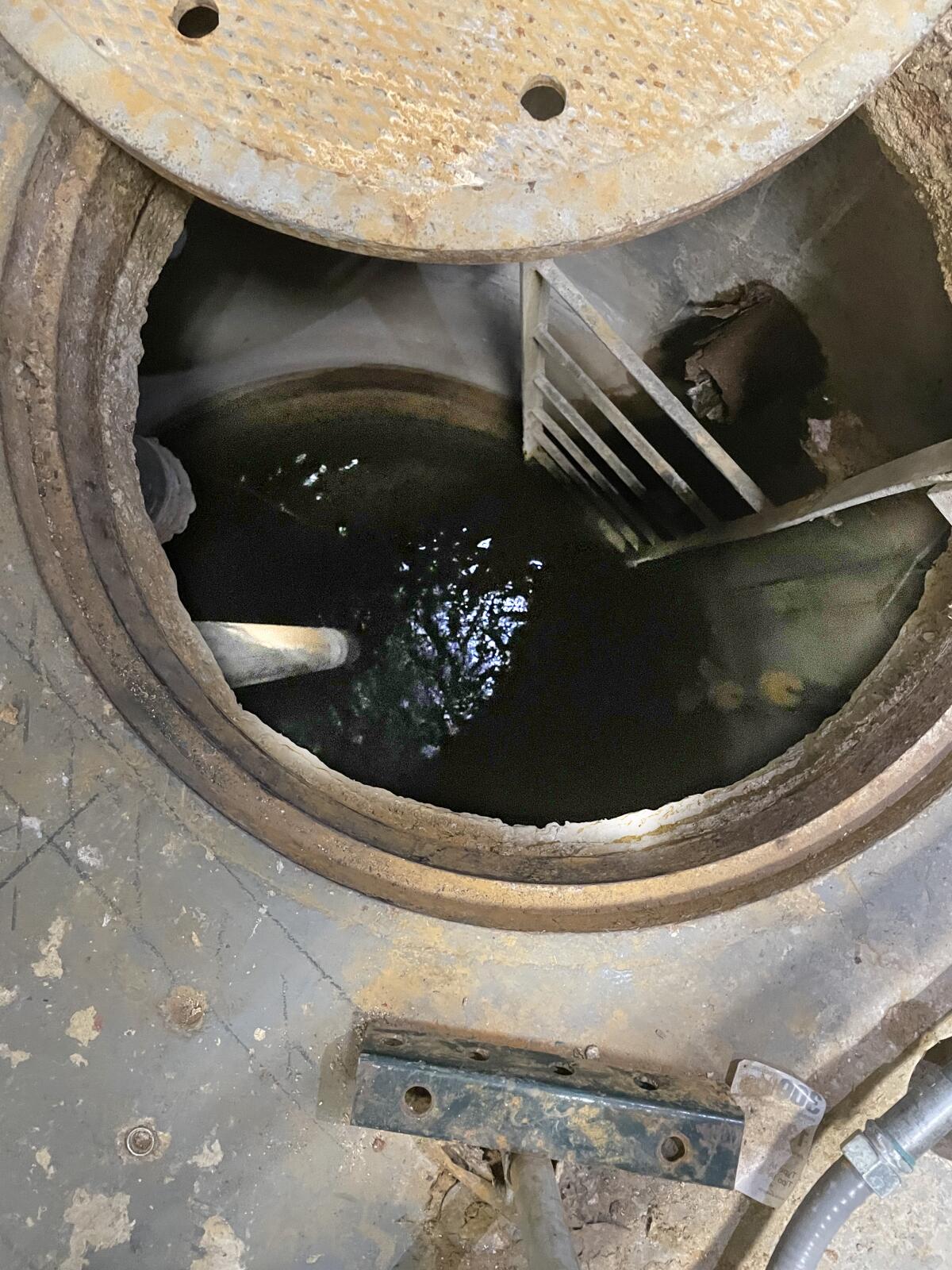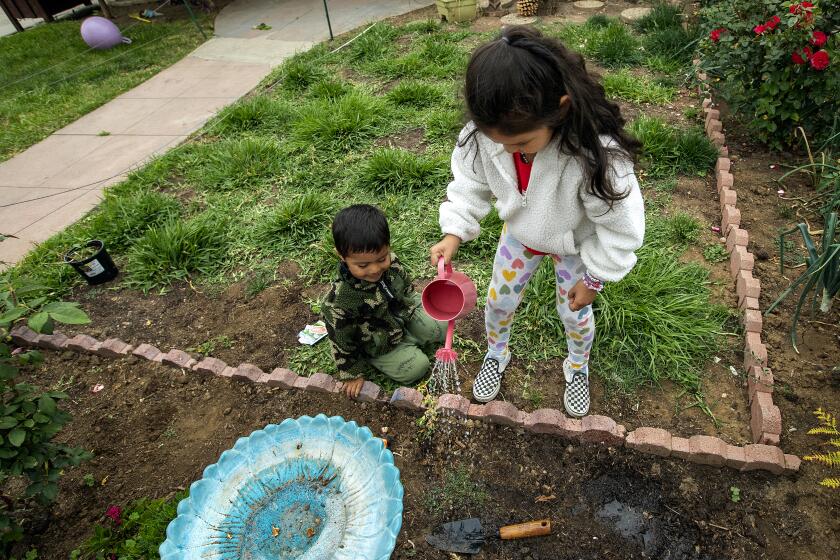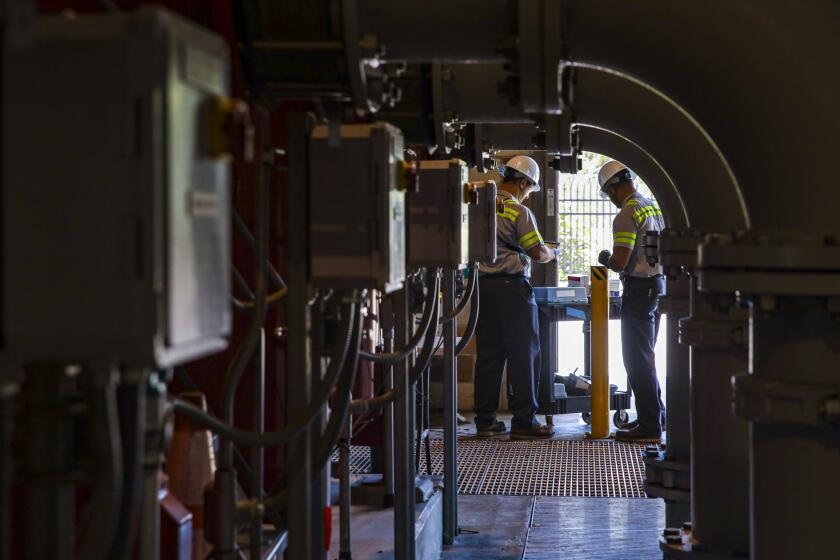Column: Beneath parched L.A. is a sea of water. But can it quench our thirst?

- Share via
As the California drought endures, and water conservation becomes critical to our survival, is one of the answers under our feet?
I began giving the possibility more thought after corresponding with John Eric Juricek, a West Hollywood resident who saw an L.A. Times story about conservation and wondered about the water seeping into the garage of his apartment building.
“We have sump pumps running day and night to keep the water out of our elevator shaft and we have persistent groundwater leaks coming up through the floor of our parking garage,” said Juricek. “I believe it’s all going down the drains and into the ocean.”
Juricek’s curiosity piqued my own, and I’ve spent several days trying to get a better sense of what’s underground in Greater Los Angeles. We all know there’s water down there, but how much, and where? Is it really so close to the surface in some places that it can seep into an underground parking garage, and if so, can it be pumped out and put to good use?

The answer to the last question is a definitive yes. In fact, there’s something of a river running under Cedars-Sinai Medical Center, and Isaac Bales, associate director of the hospital’s water plant, took me into the basement to see it for myself.
“Look right down there,” Bales said, pointing out an opening two or three feet wide.
“The de facto policy is cheap food,” said a drought official, adding that the state water supply could not sustain “zillions of acres of almonds and grapes.”
Eight or ten feet down the shaft, water shimmered. It was like looking at a creek, and the water was so clear, you could see bottom in about six feet of water. Bales told me water is pumped out of this well and three others on hospital property and used for the hospital’s cooling system.
About 80,000 gallons daily are pumped and cleaned for industrial use, or nearly 30 million gallons a year. The $1.2-million conservation project, completed in 2018 and partially funded by the Metropolitan Water District and the Los Angeles Department of Water and Power, is saving the hospital $365,000 a year in water costs, and making 30 million gallons available for other users.
To the west, UCLA has a similar operation.
“Because of the high water table, UCLA must remove water to prevent flooding in its medical center,” said Nurit Katz, UCLA’s chief sustainability officer. About 1.5 million gallons a month are pumped into the cooling towers of a campus power plant.
“Many other Westside buildings also have dewatering projects, but not all of them reuse the water,” Katz said.
That’s partly because the engineering required to pump, decontaminate and repurpose water can be prohibitive for smaller enterprises than UCLA and Cedars-Sinai. That’s especially true where smaller or less reliable amounts of the precious resource is available, said UCLA’S Gregory Pierce, a senior researcher and water resource expert.
But that’s not to say that groundwater, which currently provides about 12% of the total supply, isn’t a significant part of L.A.’s faucet of the future. City customers in Los Angeles use about 550,000 acre-feet of water each year, and the underground basin in the San Fernando Valley can hold roughly that same amount, with enough rainfall and stormwater capture.
Anselmo Collins, the LADWP’s senior assistant general manager in the water division, said there isn’t a system of rivers and lakes underground in the Valley, despite what I saw at Cedars-Sinai. Water sits between grains of sand, he said. And at the Tujunga pumping station and drilling site I visited, that water is not near the surface. It’s at a depth of a few hundred feet.
Eveyln Cortez-Davis, director of water engineering and technical services for the LADWP, gave me a tour of the Tujunga site, which has 12 giant water pumps. But many of them have been idle, because there’s one nasty problem with much of the underground water in the San Fernando Valley.
It’s contaminated.
Decades of toxins from aerospace and industrial operations in the Valley have seeped into the water table. Joining Cortez-Davis and me on the tour was LADWP engineer Jason Lockwood, who showed me an elaborate water-purifying plant now under construction.
Another challenge in pumping water up from underground is that if you draw too much, the ground will sink, as it has in parts of the San Joaquin Valley. To prevent that from happening, the aquifers have to be recharged, which means replacing what we remove with recycled water and better management of stormwater.
Mayor Eric Garcetti has set an ambitious, hugely expensive and only partly funded goal of making the city far less reliant on imported water by 2035.
“If we just did a better job of saving, capturing and cleaning and recycling, we’d have enough water to sustain us in Los Angeles for the rest of the century,” Garcetti said.
The specific markers include conserving 25% more water than we now do, and doubling both stormwater capture and groundwater storage. The biggest ticket is the retooling of the Hyperion water treatment plant to recycle all the water it processes rather than pumping it out to sea.
None of that will be easy, but given the battles over shrinking supplies of imported water, we might not have a choice.
Los Angeles is considering ‘direct potable reuse,’ which means putting purified recycled water directly back into drinking water systems.
As for the water pumped from Juricek’s garage in West Hollywood, even as he takes shorter showers to conserve H2O, I’m still tracking the particulars. The building management is in transition, so no one was available to answer questions.
Steve Campbell, public works director in West Hollywood, said anyone pumping groundwater during a construction project needs a permit from the state. As for existing buildings with groundwater issues, pumping permits are required in some but not all cases, depending on the amount of water, whether it’s contaminated and other factors.
I saw no record of an active permit for Juricek’s building.
Water service in Juricek’s neighborhood is provided by the city of Beverly Hills (LADWP serves the eastern part of West Hollywood). Shana Epstein, public works director in Beverly Hills, told me that years ago, a water conservation advocate complained that she heard “gallons and gallons of water” flowing into a storm drain near her home at night.
Epstein said the city came up with an ordinance requiring anyone who pumps groundwater to comply with one of several options, including recycling the water for “beneficial use” such as irrigation on the property, or paying the city the cost of the water that’s sent down the drain.
Sounds like a pretty good idea, because when you’ve created a climate crisis like we have, every drop is precious.
More to Read
Sign up for Essential California
The most important California stories and recommendations in your inbox every morning.
You may occasionally receive promotional content from the Los Angeles Times.













